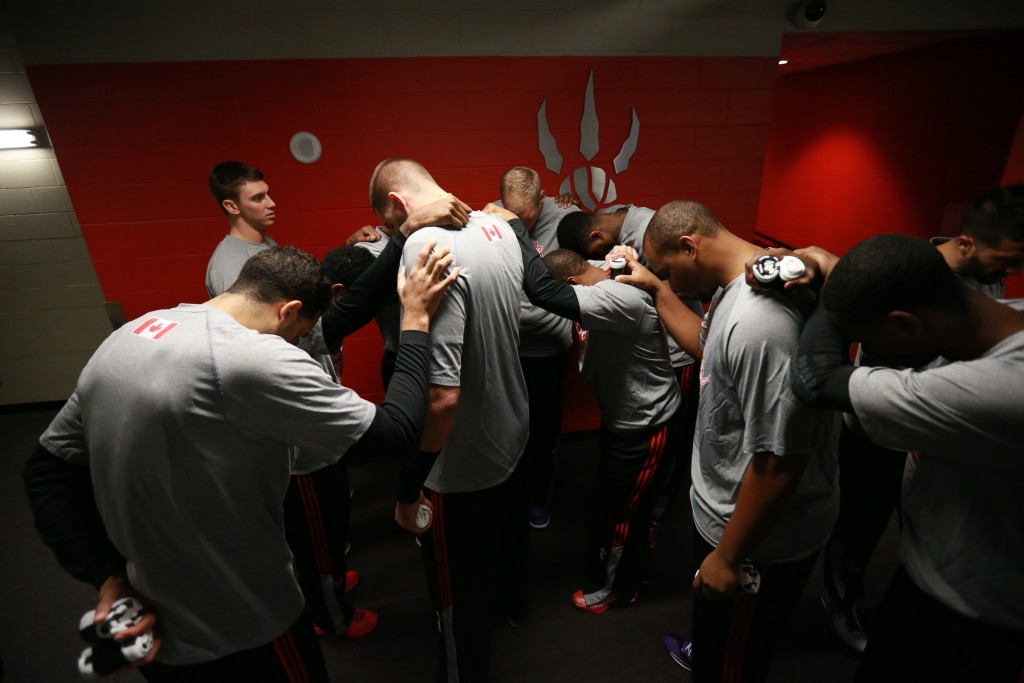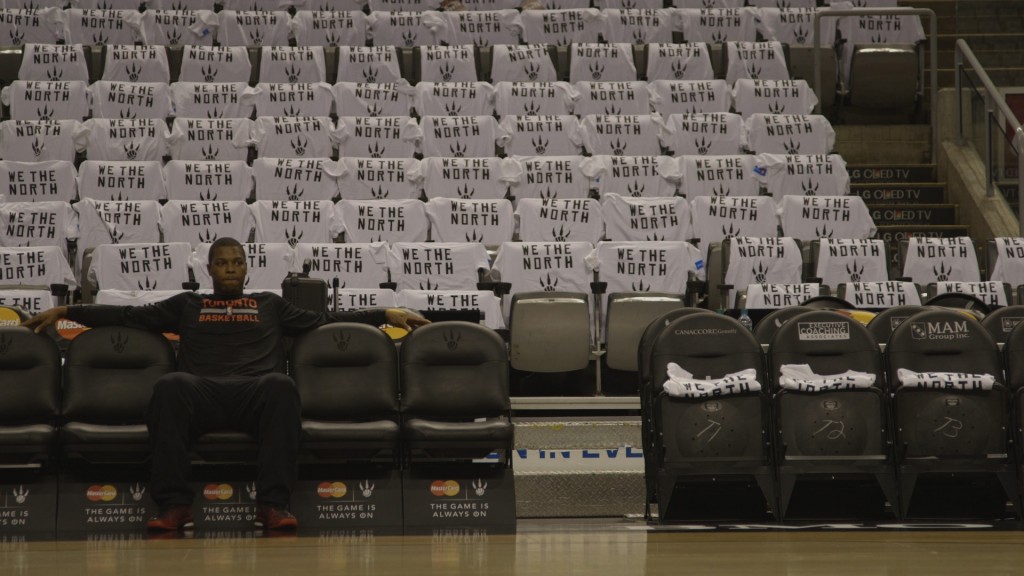
Open Gym, the Maple Leaf Sports and Entertainment produced television show which follows the trials and tribulations of the Toronto Raptors, is getting promoted to a starting role. Entering into its third year, Open Gym will expand to 28 episodes and air on TSN 4 at 1pm (primetime encores will also be offered), as well as being featured in the Bell TV app. In addition, Bell will soon launch a Open Gym After Show, where fans and basketball insiders will discuss the events of Open Gym, on Fibe TV as well as the Bell TV app.
Bell says the content partnership aligns with the company’s ‘TV Anywhere’ strategy, which is designed to make its premium content device agnostic. The strategy also runs contrary to Rogers’ approach to sports content on mobile, which lends itself more to dedicated apps for content. Importantly, because Open Gym airs on TSN, it is also available to non-Bell customers via the TSN GO app.
There are some restrictions, however. For example, because the Open Gym After Show will only be made available via Fibe TV and the Bell TV app, non-Bell customers will be unable to watch. Bell will also be airing a premiere addition of Open Gym, with no commercials and additional content, 24 hours in advance of the standard episode, that will only be available to Bell TV customers via the Bell TV app.
Given that Bell is currently in a spat with Rogers over exclusive GamePlus content being provided solely to Rogers customers, this is mildly disappointing. However, in speaking to Nicolas Poitras, VP of Communications Marketing at Bell, I was told the situation was different as the company is “absolutely open to making it more broadly available” to broadcasters wishing to license the content.
I was able to speak with Mr. Poitras about Bell’s content strategy and more, which you can find below.

Bell’s TV Anywhere strategy is essentially about ensuring that content you’re providing is distributed equally across all your digital access points. Can you talk to me a bit about how as a company you came to that decision?
We think that you want to be able to do whatever you want with whatever device you have on you at that point in time. So if you have your smartphone with you and you want to watch a certain channel, you want to be able to get that channel. That specific realization made us think that ultimately the end goal is that there’s no difference between the TV in your living room and the tablet on your lap and the smartphone on your hand.
So that’s our vision. We like to be able to say, ‘pick your screen and fill it with goodness.’ So on our Bell TV app, we have 115 channels, and we think this will continue to grow, because it should be the same.
The second thing is that now, you’ve got a wide variety of apps. Every single channel has an app. That’s okay, – certain people will want a specific brand experience. But if you want to watch other networks you have to switch to another app. So we think that our role as a TV distributer, in a world where you’ve got a variety of apps and online sources of content, we should be the aggregator. We should help you and mediate for you.
To act as the connector.
Yeah! We should be the entry point into the content that you want no matter what it is, and no matter the device you happen to have in front of you.
But you’re also doing things with the local TV stations with the after show, and additional content with the premiere version, so it seems like you have an opportunity to provide essentially the same thing but tweak it slightly for each screen.
I think ultimately the vision is that all content is available on all screens. Today, for a bunch of reasons, it’s available on different screens, but I think down the road the vision is that no matter what you want to watch you’ll be able to do it on any screen.
I actually believe that providing value-added content with extra footage is the way of the future, but it shouldn’t be restricted to one platform or the other. So as time goes on, I think you’ll see that content show up on all platforms – on the set top box, on the tablet, on the smartphone.
One thing that I think that’s interesting is that Rogers is forming content partnerships at a high level with established content producers – like the recent Vice announcement. With Open Gym, that seems a little more internal, that you helped facilitate. Is that something you’re looking to do more of, where you’re not just buying something but helping to grow it?
We did the same thing with TIFF on our Bell TV service, and it gave people a behind the scenes look at TIFF. And TIFF we’re a sponsor of – we have that relationship, and it’s a great event, so why not make it shine? Everybody benefits. Same with the Raptors. They’re increasingly popular, right now they’re doing well, so how can we help them shine?
But at the same time we also invest with a lot of independent producers to produce other shows. If you look at some of the content on the Bell Media networks, a lot of it is locally produced with independent producers.
With that, do you ever see opportunities where – especially with what is happening right now with the Toronto Raptors where there is a fever for all things Raptors – the content will eventually evolve to a point where there is just a Raptors hub for all that content? It seems like a great entry point for specific verticals, and I know with the Tiff example, that does have its own dedicated app.
That’s more of an MLSE or a Raptors discussion, and it’s up to them to give you there point of view on that. However, when it comes to our standpoint of TV content, we do agree – there is that opportunity. Off course we carry their games on TSN, we’re going to do the Open Gym show, the after show. So from a TV standpoint, we’re in it, but from a content and information standpoint, that’s more of a Raptors question.
MobileSyrup may earn a commission from purchases made via our links, which helps fund the journalism we provide free on our website. These links do not influence our editorial content. Support us here.


